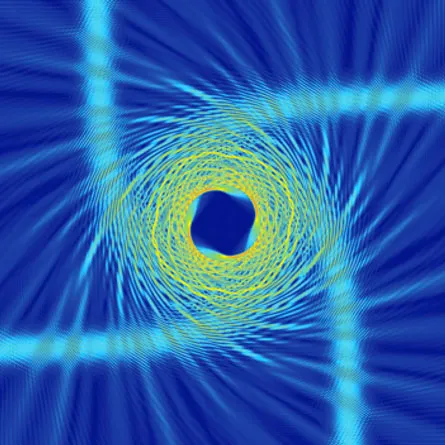- More than 2 years ago
Tiny special materials may mimic astronomical events, including the trapping of light in black holes and the disruption of planetary orbits, a new report in the September Nature Physics proposes. The shape and design of such materials may allow scientists to do previously impossible experiments by replicating aspects of the heavens at the laboratory bench.

“Astrophysicists build a telescope and watch the sky, and if they’re lucky, in their lives, they’ll see one or two events,” says study coauthor Xiang Zhang, of the University of California, Berkeley and Lawrence Berkeley National Laboratory. “Now you don’t have to wait 100 years to observe interesting phenomena. Now we can study it in a tabletop experiment.”
Zhang and his colleagues propose to mimic the cosmos using a breed of man-made materials that twist and contort light and other electromagnetic waves in unusual ways. These materials, known as metamaterials, guide light in directions that normal materials can’t.
The new study “may give new inspiration to particle physicists and astrophysicists,” comments Ulf Leonhardt of the University of St. Andrews in Scotland. “If you begin to do experiments in the laboratory, it creates surprises and new perspectives.”
Zhang’s team proposes a new class of metamaterials—called continuous-index photon traps—that can direct light in a way that traps it inside. Through a series of calculations, the researchers conclude that mixtures of copper and air, or mixtures of the alloy gallium indium arsenide phosphide and air, would create such a material.
“Light traveling through a metamaterial is very similar to light traveling through the universe,” Zhang says. Though the material is not the same as space, and the trapping region is not exactly like a black hole, Zhang says that under certain conditions, “the physics works exactly the same, so you can use one to study the other.”
In other calculations, the researchers found that with some basic tweaks in the design, the new class of metamaterials could also model chaotic systems, such as disordered planetary motions, by inducing chaos in electromagnetic waves.
Constructing these metamaterials doesn’t present a major challenge, says Leonhardt. “This is not that far off,” he says. “In the not-too-distant future, we will see these kinds of things.”
In addition to helping researchers study fundamental questions about the universe, these metamaterials may also offer new ways to store energy. Practical applications might include smaller, more powerful antennae and energy trapping devices, Leonhardt says. “Those could be interesting spin-offs.”
In particular, Zhang says, the proposed metamaterials might be the perfect way to concentrate and hold light, creating a highly efficient solar cell. Light trapped and held in place could be collected for energy use. Such a solar cell could be far more efficient than those currently in use, he says.







